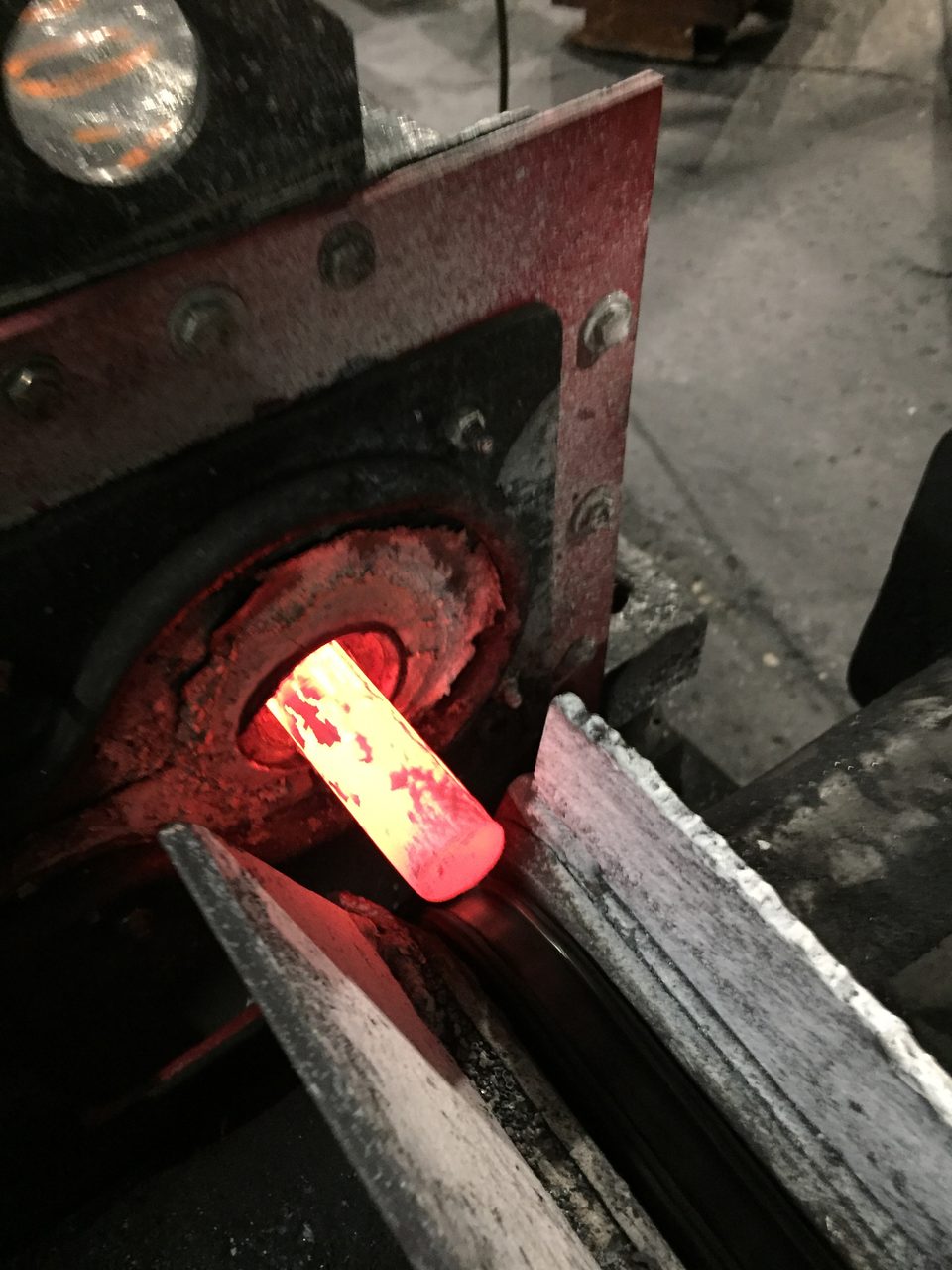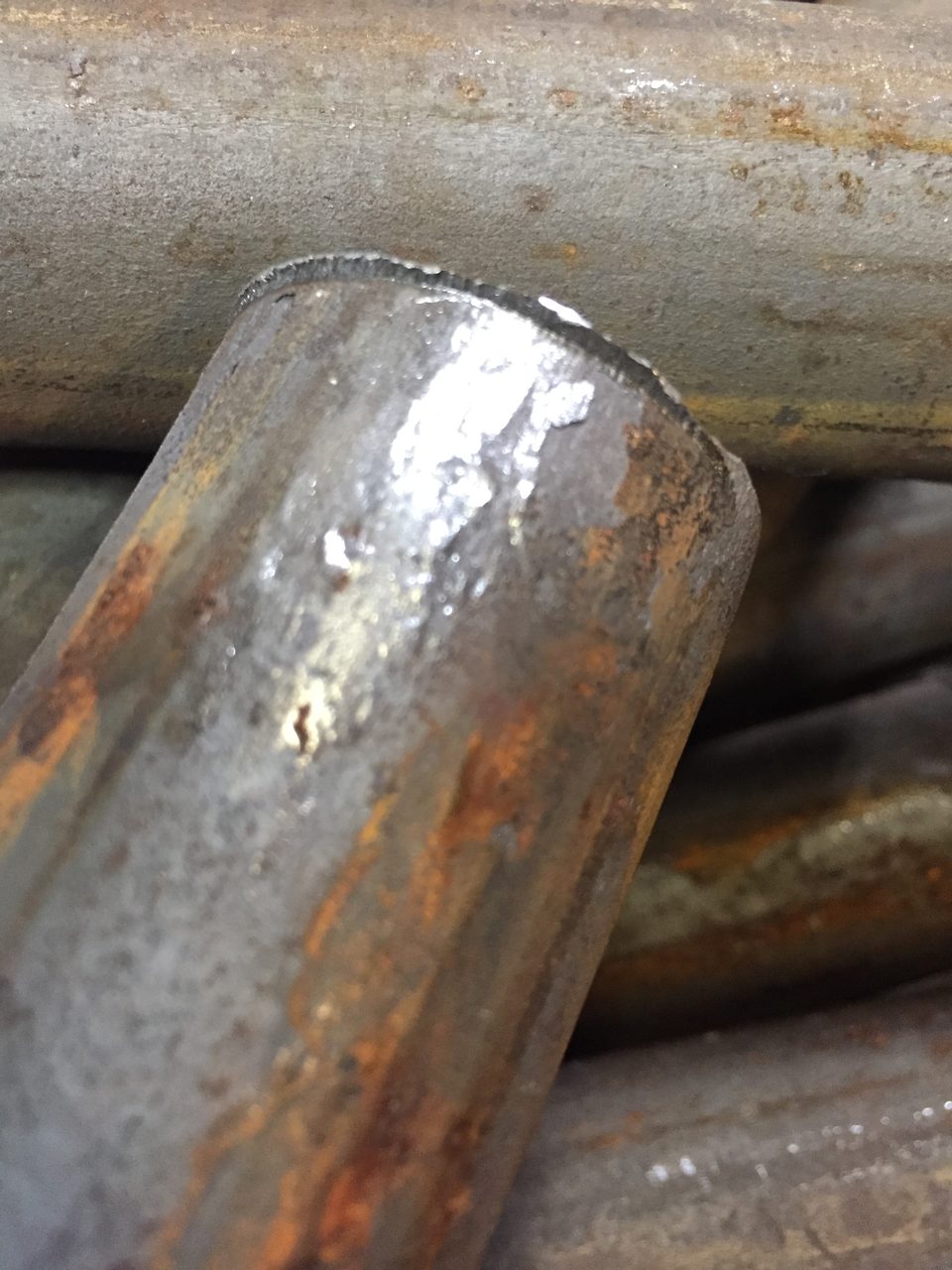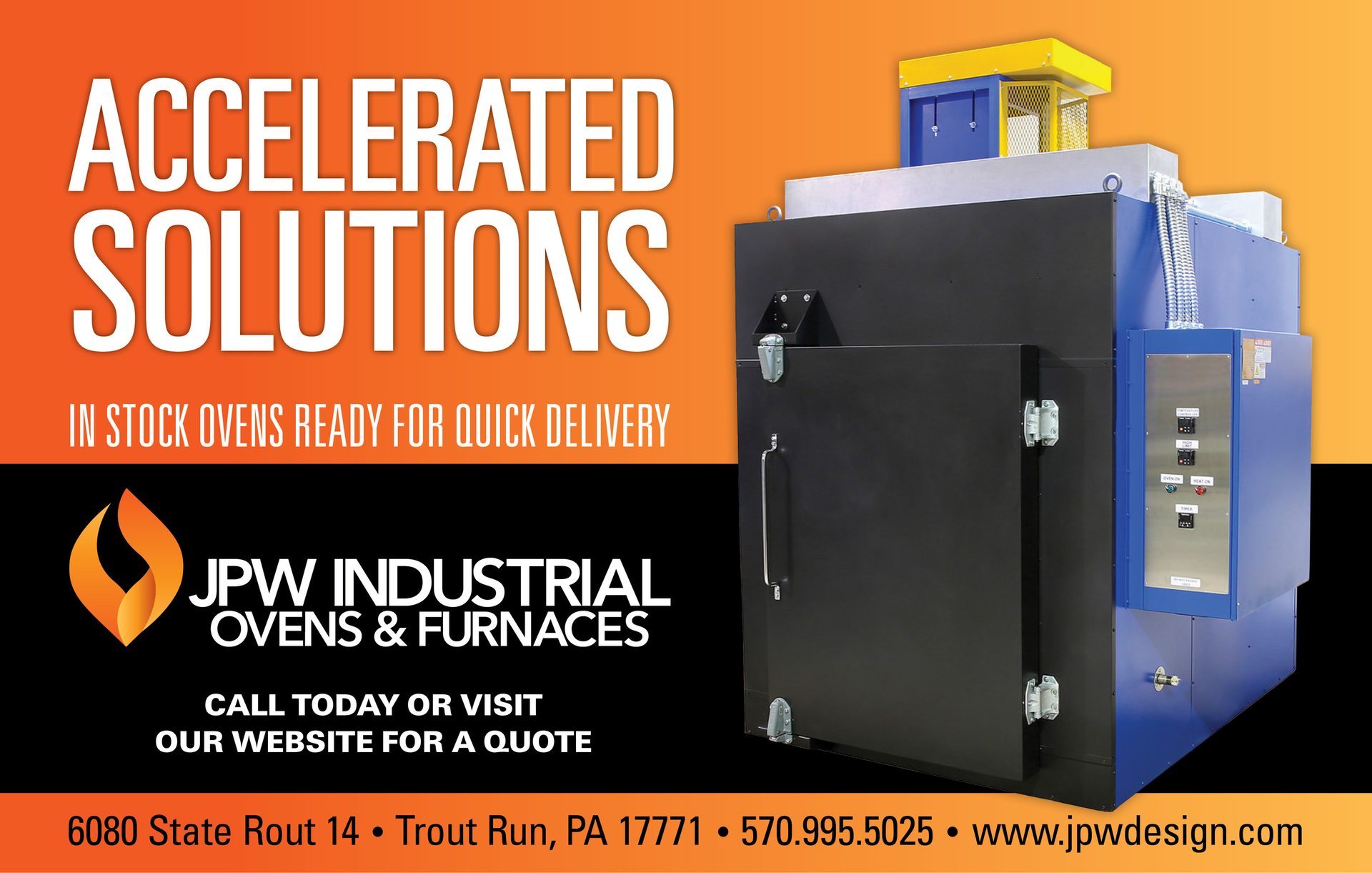INDUCTION HEATING
The temperature uniformity in an induction-heated billet can be improved if the billet is allowed to briefly equilibrate before forging.
Induction Heating for Forging Billets
L. Terry Clausing – Drysdale & Associates; Cincinnati, Ohio
Using the metaphor of cooking a steak to its desired level of “doneness,” this article examines the difficulties involved in “cooking” forging billets in induction coils to their most uniform level of completion.
How do you like your billets? Rare, medium or well done?
Actually, we want our billets done well, meaning that we are looking for the billets to be heated to a very specific and narrow range of temperature for forging. This is essential because billet temperature at the time of forging is the fundamental characteristic that determines the metallurgical properties and quality of the forged part. And billet temperature does not refer to the surface temperature.
Ideally, we desire the billet to be “soaked through” to the proper temperature. One of the problems with induction heating is that the surface and edges are heated more than the inner mass of the billet. Therefore, induction heating often results in a high-temperature skin effect, which can be substantially hotter than the inner core temperature.
Part of the problem is the desire to process more parts faster – crank up the power and heat the billets faster to get production up. But it’s just not that simple. That’s like piling on more charcoal and making the fire hotter to grill the steaks. They get burned on the surface and remain raw in the middle, but the goal is to have a uniform billet temperature through and through for proper forging.
The goal is uniform high-quality production. It just does not make sense to push quantity over quality, but all too often we try. Achieving high quality is all about knowledge and control. The knowledge part refers to understanding the thermodynamics of how heat behaves in materials and the physics of how the temperature is measured for process control.
Consider a typical induction heating process with the billets being heated as they pass through the induction coil. Each billet is (or should be) the same material, the same size and hopefully the same starting temperature. And the induction heating system should be applying the same power to the billets as they pass through at the same constant rate. If all these parameters are operating properly, according to the laws of thermodynamics, each billet will be heated to the same temperature. Quality is all about control. Our greatest problem is that we are conditioned to make things “faster and easier” without understanding the impact on quality.

A heated billet exits an induction furnace.
The Maillard Reaction
Consider the traditional way to grill a steak. Fire up the grill, and then place the steak on the hot grill for a few minutes. If you are more knowledgeable, you may have a meat thermometer to insert into the steak while it cooks. I have a “meat thermometer” that reads out rare, medium rare, medium and well done as if we are too ignorant to understand temperatures. Since most people choose medium rare, I will suggest that medium rare is approximately 135ºF. If the thermometer is accurately positioned in the middle of the steak, when the temperature reads 133ºF, we take it off the grill and let it rest a few minutes before serving. If you leave the thermometer inserted, you will see that the core temperature rises to 135ºF within a couple of minutes as the heat continues to flow toward thermal equilibrium.
The problem with this technique is that while the core may be a perfect 135ºF, there is a substantial thermal gradient from the charred surface to the 135ºF core temperature. This is apparent when you cut into the steak. But what we want is a charred surface with a perfectly uniform 135ºF from edge to edge. Why do we want the charred surface on the steak? The char is the Maillard reaction. This is a chemical reaction that results from the effect of the heat rearranging amino acids and certain simple sugars, which then arrange themselves in rings and collections of rings that reflect light in such a way as to give the meat a charred appearance and the distinctively complex aromas and flavors.
Forging Billets
We do not want a charred surface in induction heating and forging, but we do typically form a layer of scale on the billet surface. Since we can’t insert a thermometer into the billet, we typically use an infrared temperature sensor to measure the billet temperatures as the billets emerge from the induction coil. Scale tends to obscure our view of the heated billet, making the temperature measurement a bit more complicated.
The tendency is to use two-color or ratio infrared sensors to monitor the billet temperatures because two-color sensors are excellent at measuring the highest temperature in their field of view. So, by setting up the sensor to hold the peak temperature seen for each billet, it tends to “see around” the scale. But while the two-color sensor is very accurate and reliable, there are issues.
False low measurements can be caused by heavy scale, and false high measurements can be caused by the induction field overheating a sharp edge, such as a lip that is formed when the billets are cut to length. This lip is often heated more than 100ºF hotter than the billet surface, resulting in the billet being rejected for being over the temperature limit for the process when, in fact, the billet temperature is fine. With proper setup and installation, a single-color sensor can provide better process control because it is minimally biased by the hot lip or edge.
There is a technique for producing perfectly cooked steak – called sous vide. In sous vide cooking, the meat is placed in a temperature-controlled chamber at the desired temperature. Restaurants use specialty ovens called combi ovens. The meat is first vacuum sealed in a plastic bag. For medium rare, the oven is set to the desired final temperature (135ºF). The steak will be held in this combi oven until the meat is soaked through and through to the desired temperature. When it is time to serve the steak, it is removed from the oven and quickly seared on both sides to produce the Maillard surface reaction for flavor and aroma. The final product is a perfectly cooked medium-rare (135ºF) steak edge to edge with perfect Maillard surface finish.
If only we could only achieve the same thermodynamic result with our billets! The fundamental problem with the infrared temperature-sensor control system is that it still does not ensure a uniform soak temperature throughout the billet. In much the same way that your steak benefits from “resting” after grilling and before serving, allowing the meat to come to thermal equilibrium, it can be beneficial to design the induction/forging system such that the heated billet is allowed to equilibrate briefly before forging to ensure proper flow of material and forming. The key to high-quality forged parts is understanding and controlling how the heat behaves in our billets.

A lip may be formed when billets are cut to length for heating and forging. This lip can be 100ºF or hotter than the billet surface, resulting in the billet being rejected for being over the temperature limit for the process.
Conclusion
An undesirable layer of scale typically forms on the billet surface in induction heating and forging. This obscures our view of the heated billet, making the temperature measurement a bit complicated. Just as your steak benefits from “resting” after grilling and before serving, it can be beneficial to design the induction system such that the heated billet is allowed to equilibrate briefly before forging to ensure proper material flow and forming.
Author L. Terry Clausing is president of Drysdale & Associates Inc., Cincinnati, Ohio. He serves on ASTM E07 Committee on Nondestructive Testing and chairs E07.10 on Specialized NDT Methods, ASME BPV Section V on Personnel Qualification and Certification. He may be reached at 513-739-2317 or terry@drysdaleassoc.com.
All photos courtesy of L. Terry Clausing.



